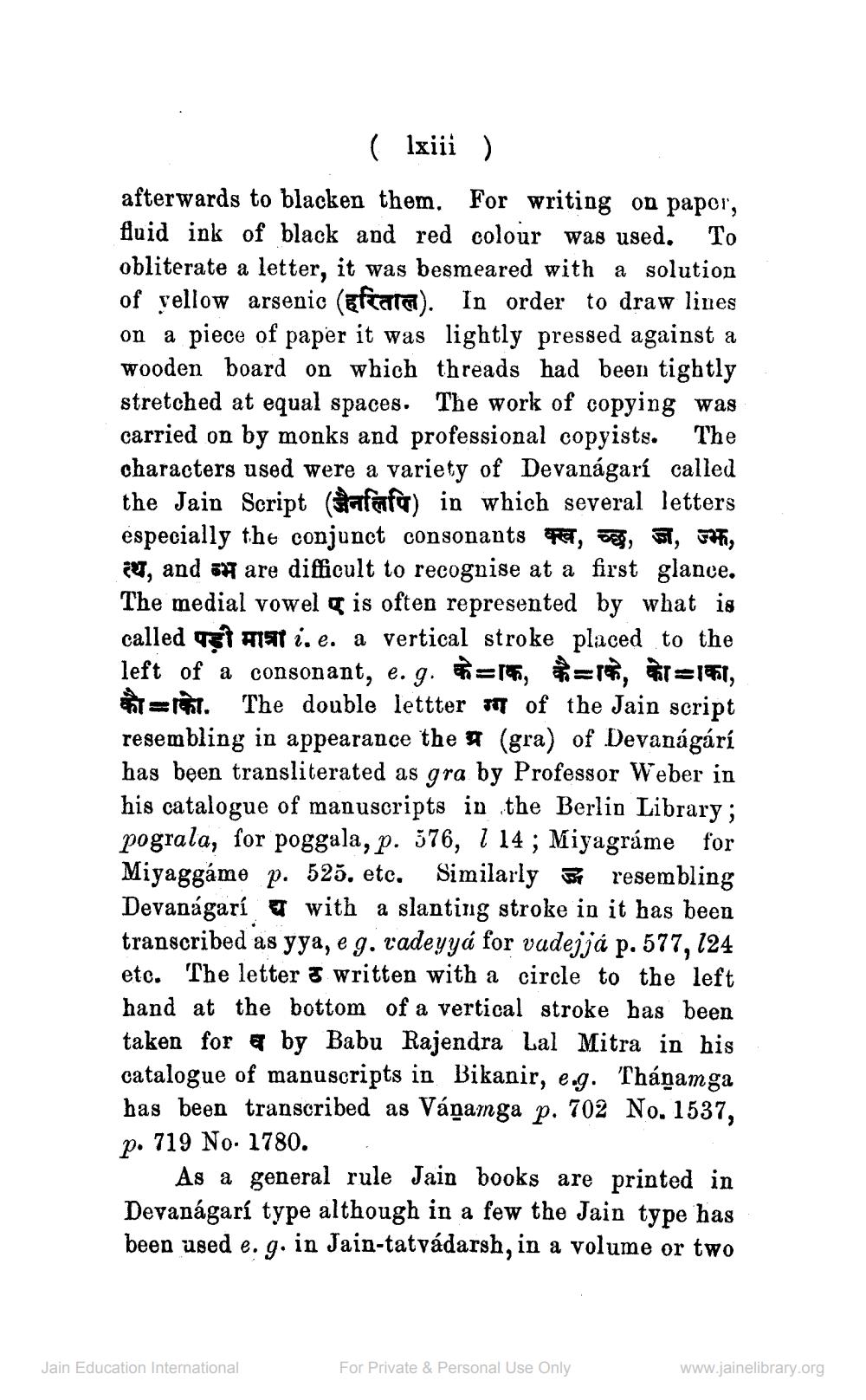________________
( lxiii ) afterwards to blacken them. For writing on paper, fluid ink of black and red colour was used. To obliterate a letter, it was besmeared with a solution of vellow arsenic (Eftara). In order to draw lines on a piece of paper it was lightly pressed against a wooden board on which threads had been tightly stretched at equal spaces. The work of copying was carried on by monks and professional copyists. The characters used were a variety of Devanagarí called the Jain Script (dafafa) in which several letters especially the conjunct consonants , , , 527, c, and 54 are difficult to recognise at a first glance. The medial vowel g is often represented by what is called Tat Alat i.e. a vertical stroke placed to the left of a consonant, e.g. = =1, r=141, को-को. The double lettter ग्ग of the Jain script resembling in appearance the # (gra) of Devanágári has been transliterated as gra by Professor Weber in his catalogue of manuscripts in the Berlin Library; pograla, for poggala, p. 576, 1 14; Miyagráme for Miyaggame p. 525, etc. Similarly by resembling Devanagari 5 with a slanting stroke in it has been transcribed as yya, e g. vadeyya for vadejjá p. 577, 124 etc. The letter & written with a circle to the left hand at the bottom of a vertical stroke has been taken for å by Babu Rajendra Lal Mitra in his catalogue of manuscripts in Bikanir, e.g. Tháŋamga has been transcribed as Váņamga p. 702 No. 1537, p. 719 No. 1780.
As a general rule Jain books are printed in Devanagarí type although in a few the Jain type has been used e.g. in Jain-tatvádarsh, in a volume or two
Jain Education International
For Private & Personal Use Only
www.jainelibrary.org




